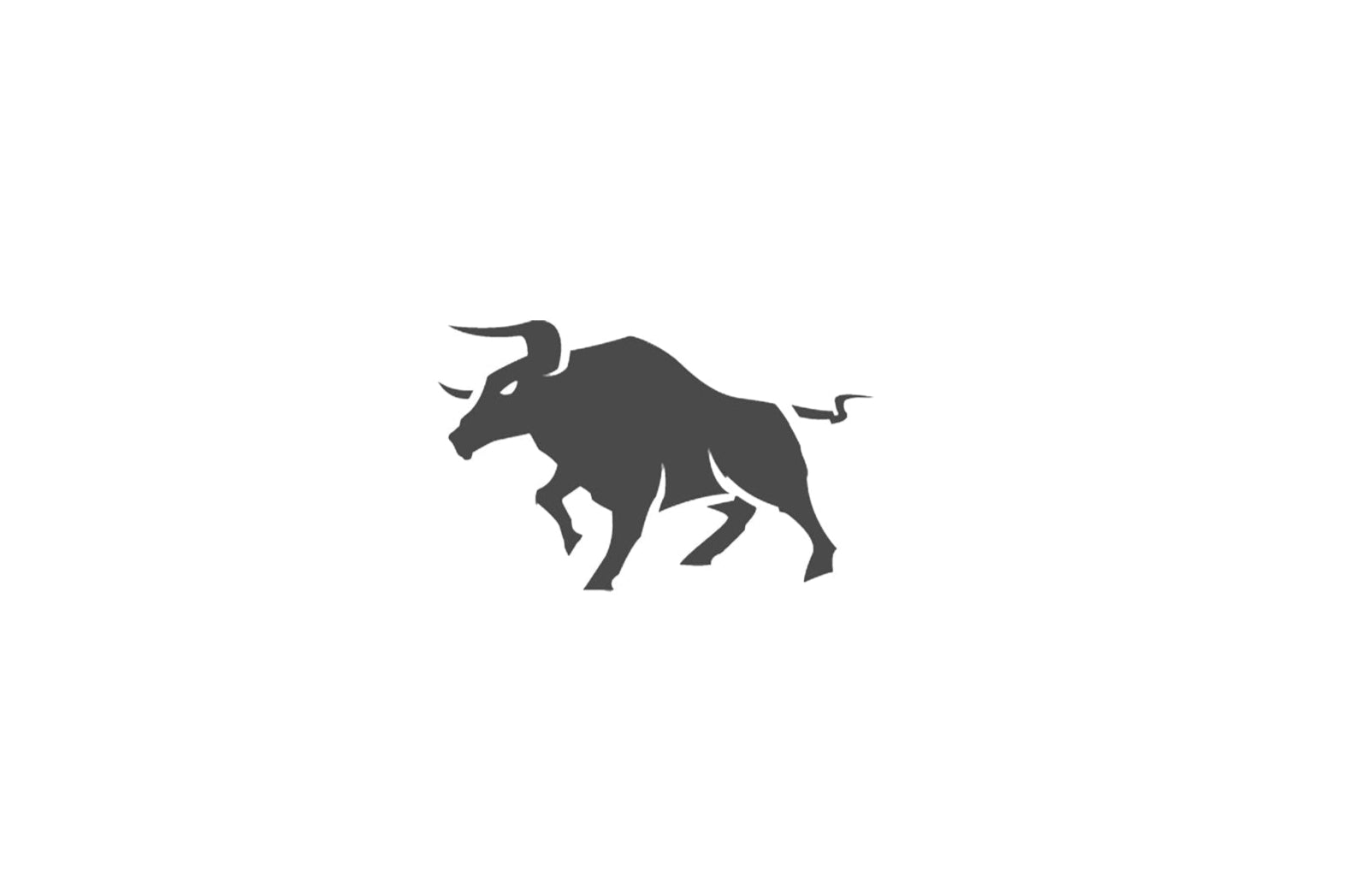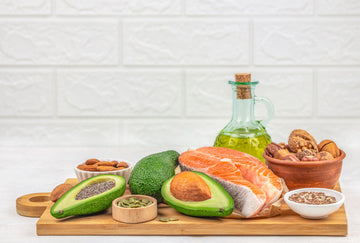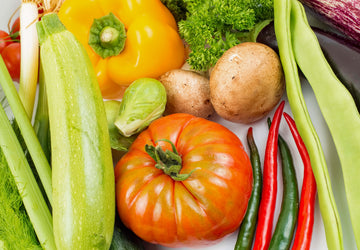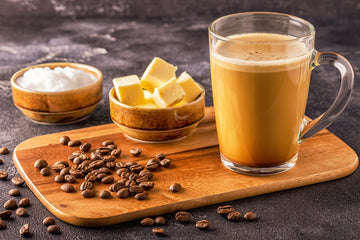Blog
TRIMETHYLGLYCINE POWDER (BETAINE POWDER)

What is betaine?
Betaine (also known in science as glycine betaine or trimethylglycine) is a quaternary ammonium compound that is formed as an oxidation product of the alcohol choline. The name is derived from the Latin word for beet ("beta"). Betaine is also a chemical derivative of the amino acid glycine and thus has a similar structure, but is not itself an amino acid. Rather, betaine can be seen as a micronutrient that supplies the human organism (and other living beings) with methyl groups through its three methyl groups. Betaine therefore plays a key role in the biosynthesis of substances such as carnitine, creatine, lecithin and methionine. Betaine is lipotropic, i.e. it attracts fat and thus accelerates fat breakdown. Like choline, betaine is also a vitamin-like substance and can be compared particularly well with B vitamins.
Betaine is increasingly the focus of various research and analyses, particularly in the USA. The researchers are primarily interested in betaine's ability to inhibit homocysteine levels in the blood. Homocysteine is an amino acid that is produced during metabolism as an intermediate product of the demethylation of methionine. Elevated homocysteine levels in the blood have been proven to damage blood vessels. Those affected are at a much higher risk of developing arteriosclerosis, heart and liver disease, as well as depression and, especially in old age, dementia. Betaine could therefore prove to be an effective preventative for these diseases.
Betaine as an undetermined nutrient
Betaine is still largely unknown in the "mainstream" and has not yet established itself in the now quite large market for health-conscious nutrition. One reason for this could be that the substance is difficult to classify in a specific nutrient category, while at the same time it has many similar properties to various better-known substances. As already mentioned, betaine, as a derivative of glycine, is structurally similar to amino acids, but is not an amino acid. Just like folic acid and other B vitamins, betaine also has the effect of lowering homocysteine in the blood. Nevertheless, betaine is expressly not a vitamin. Betaine is sometimes incorrectly referred to as a secondary plant substance. The reason for this is probably a misconception or confusion. Plants with a high betaine content often also have a high betanin content. Betanin is in fact a secondary plant substance, more precisely a natural red dye. But despite the similar name, betaine and betanin should not be used as synonyms. As already mentioned, betaine is formed as an oxidation product of choline, which in turn is also formed naturally in the human liver and kidneys. However, secondary plant substances cannot, by definition, be formed in the human organism. Betaine therefore logically cannot be counted among the secondary plant substances.
Betaine through dietary supplements
Currently, the vast majority of betaine-based nutritional supplements on the market are sold as betaine HCL (hydrochloride). Hydrochloride is hydrochloric acid. A commercially available betaine HCl preparation consists of approximately three quarters betaine and one quarter hydrochloric acid. Betaine HCL is used in patients whose body's own hydrochloric acid production is too low, making the gastrointestinal tract susceptible to infestation by parasites or bacteria. A number of possible secondary diseases such as heartburn or gallstones can also be prevented by taking betaine HCL.
Basically, when it comes to betaine, it is important to distinguish between these betaine HCL preparations and betaine TMG preparations. Too high a dose of betaine HCL can quickly lead to hyperacidity. In order to achieve the previously mentioned effect of lowering the homocysteine level in the blood, betaine TMG (trimethylglycine) should therefore be used instead. This is therefore non-mixed betaine.
Betaine through food
Betaine is present in many foods. Unsurprisingly, beetroot (220 to 260 milligrams per 100 grams pickled and around 130 milligrams raw) and sugar beet in particular have a high betaine content. Due to the high content in sugar beet, betaine is also extracted industrially as a by-product in sugar production. The betaine content is even higher in raw or cooked spinach (550 milligrams per 100 grams, but only around 110 milligrams when frozen). Other foods rich in betaine include rye flour and mussels. The betaine content in broccoli is somewhat controversial. Different scientific sources use very different figures.
Betaine against the pollutant homocysteine
As already explained, betaine is particularly valuable as an active ingredient against excessively high levels of homocysteine in the blood. Keeping the level of homocysteine in the blood low reduces the risk of heart and circulatory diseases as well as the risk of suffering from arteriosclerosis, depression, dementia, eclampsia, macular degeneration or neural tube defects. Since homocysteine is formed through the demethylation of methionine, betaine can use its methyl groups to convert homocysteine back into methionine through methylation. In addition, the key product S-adenosylmethionine (SAMe) is formed during methylation. This also has a protective effect against arthritis, depression and liver damage. After betaine has given up one of its methyl groups, it becomes dimethylglycine (DMG) or pangamic acid, which is another vitamin-like substance.
Effects of betaine in relation to certain situations, organisms and diseases
Alzheimer's: Typical Alzheimer's symptoms caused by increased homocysteine levels in the blood could be alleviated by betaine in studies.
Blood vessels: As already mentioned, betaine inhibits the homocysteine content in the blood, which primarily protects the blood vessels from damage. A daily intake of six grams of betaine can reduce the homocysteine content by up to 20 percent. Studies have also found that a betaine deficiency after a heart attack significantly increases the risk of further heart attacks or other types of heart damage. In men, increased betaine intake can also lead to an improvement in the erectile function of the penis.
Fitness: Several studies have shown that increased betaine intake leads to an increase in performance in athletes. The increased betaine intake also reduces the breakdown of energy reserves in the body and promotes the building of muscle mass.
Liver: Due to the fat-attracting properties of betaine, the substance supports the liver in fat processing. In addition, some studies have also shown that betaine can at least temporarily reduce liver damage caused by alcohol abuse. This is achieved by homocysteine methyl transferase.
Kidneys: Betaine has been shown in some studies to inhibit pro-inflammatory cytokines and differentiation and growth proteins. This effect can mitigate the damage to the kidneys caused by high sugar consumption.
Pregnancy: An increased homocysteine level in expectant mothers can significantly increase the risk of neural tube defects in unborn children. The child's risk of suffering from age-related macular degeneration (AMD) later in life also increases with the homocysteine level in the mother's blood.
Digestion: Betaine has a positive effect on digestion, especially in older people. Alongside pepsin, betaine also plays an important role in protecting human intestinal functions. If the body's own hydrochloric acid production is insufficient, betaine, as already mentioned, can balance the level of hydrochloric acid in the body in the form of betaine HCL.
Side effects, optimal dosages and synergies of betaine
There are currently no known side effects of betaine that are really serious. However, taking betaine can lead to unpleasant body odors in people who only have small amounts of the enzyme demethylglycine dehydrogenase in their bodies. In general, however, this is a rare occurrence.
Betaine should be taken daily in a dosage of 500 to 2,000 milligrams. In the case of abnormally high levels of homocysteine in the blood and urine, the dosage can temporarily exceed 2,000 milligrams. For a positive effect on the liver, the daily dosage should be one to two grams. A significantly reduced homocysteine level in the blood was researched in studies with a daily dose of six grams.
In order to reduce the level of homocysteine in the blood as efficiently as possible, betaine should ideally be taken with B vitamins (folic acid, vitamin B6, B12). SAMe can also enhance the effect of betaine.




